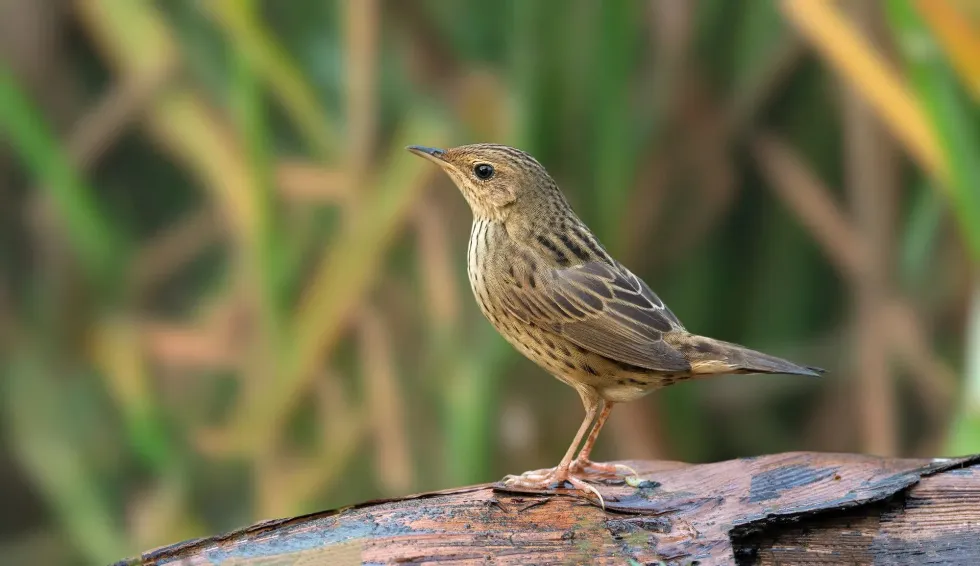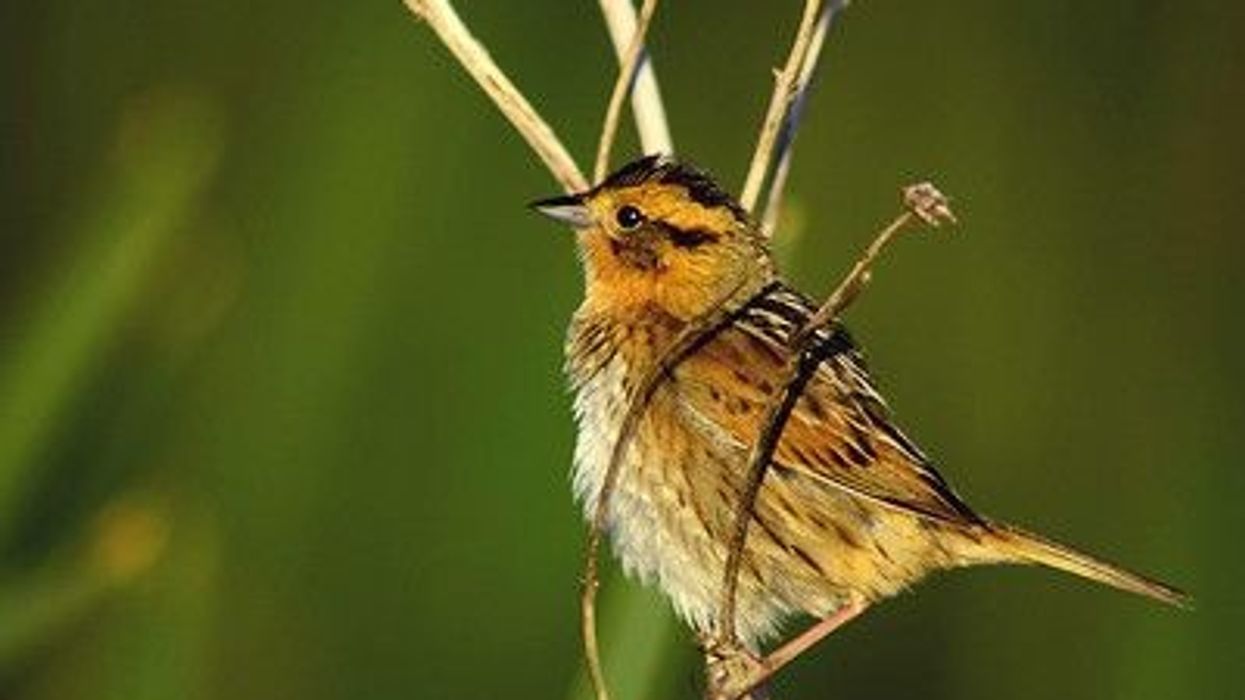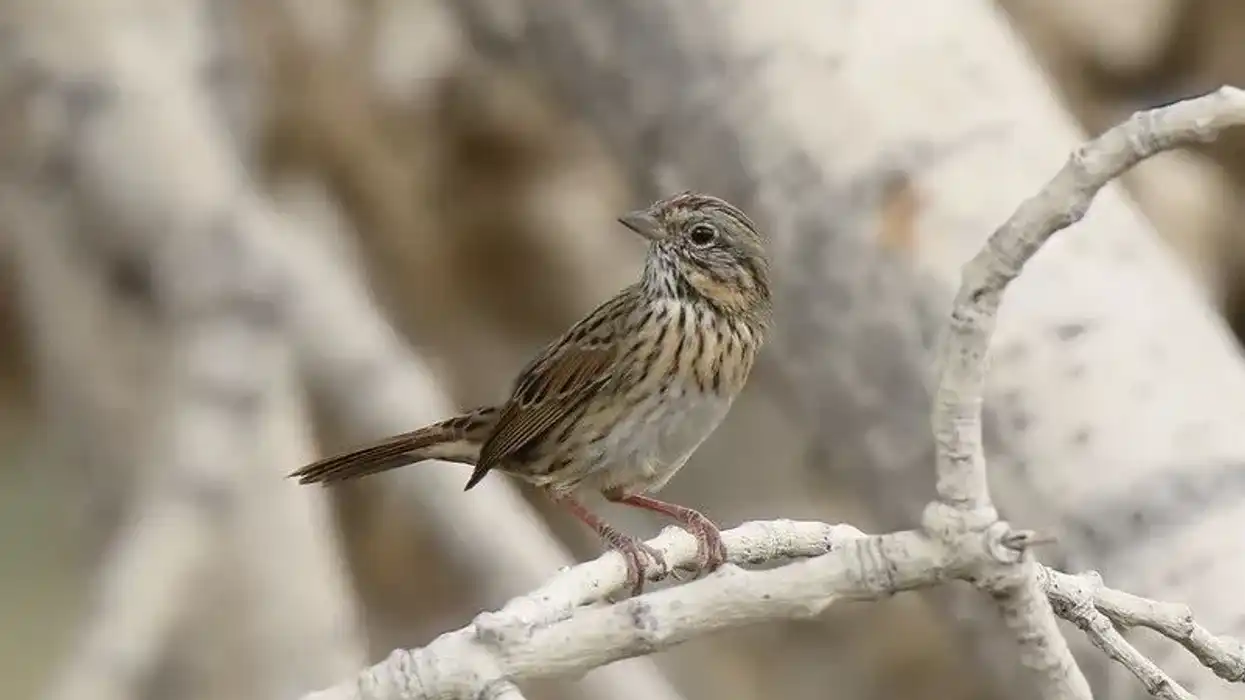The lanceolated warbler (Locustella lanceolata) is a small grass warbler of the warbler family, Locustellidae. The bodies of these birds are brown, white, and yellow in color.
The bird cannot be spotted easily in their habitats as they are skulky bird species. There are two recognized subspecies of the lanceolated warbler, L. l. hendersonii, and L. l. lanceolata.
The genus, Locustella, is a derivation of Latin 'locusta', which means 'grasshopper'. Also, this name refers to the insect-like song of the common grasshopper warbler and more species of this genus. The specific scientific name Lanceolata is a Latin term for 'spear-shaped,' which refers to their streaked breast.
Johann Jakob Kaup, a German naturalist, introduced the Locustella genus in 1929 with type species as common grasshopper warbler (L. naevia). There are 23 described species in this genus.
Also, 11 genera consist of 66 species of these insectivorous songbirds. This family was previously placed within the Old World warbler 'wastebin' family.
If these facts about the lanceolated warbler were interesting, then read more facts on the common swift and eastern kingbird here at Kidadl.
Lanceolated Warbler Interesting Facts
What type of animal is a lanceolated warbler?
The lanceolated warbler (Locustella lanceolata) is a small grass warbler of the order Passeriformes, phylum Chordata, and family Locustellidae. Some common names of this bird are grasshopper warbler, streaked grasshopper-warbler, and grasshopper-warbler.
The bird often creeps through low foliage and grass near the ground, making it difficult to spot this warbler except when they sing. This warbler is also a migrating species. This warbler often flicks their wings.
What class of animal does a lanceolated warbler belong to?
The lanceolated warbler (Locustella lanceolata) belongs to the class of Aves of animals.
How many lanceolated warblers are there in the world?
According to Birdlife International, the estimated population of Locustella lanceolata (Temminck, 1840) in Europe is around 30,000-60,000 pairs and the world population is around 600,000-1,200,000 adults. Also, the approximate population of Locustella lanceolata (Temminck, 1840) on migration in China, Korea, and Japan is 50-1,000 adults to each location, and in Russia is around 1,000-10,000 adults.
Where does a lanceolated warbler live?
The lanceolated warbler range of breeding ground habitats extends to north-east European Russia across the Palearctic extending to the north Hokkaido in Japan. The wintering habitat range is across Southeast Asia. This warbler has also appeared outside their natural world range in western Europe and Fairisle in Shetland where this bird is a rare vagrant.
The subspecies, L. l. lanceolata's breeding range around the world extends from south Finland to Russia and across north Mongolia and north-east China. Wintering grounds include Southeast Asia, northeast India, north Philippines, west Java, and Sumatra. The L. l. hendersoni breeds across north Japan, south Kuril Island, and Sakhalin islands, and wintering locations are in South-east Asia.
What is a lanceolated warbler's habitat?
The habitat range of this bird includes grassland with thick or shrubby vegetation or trees, scrub, weeds, wet clearing, or bogs, rice-field, and edges of a cultivated field. This bird mostly breeds in grassy and moist meadows with scattered bush and ground the water near the ground.
As a migrant species, they have appeared in marshes, wet grasslands, and thick vegetation of ditches and waterbodies on migration.
Who do lanceolated warblers live with?
These birds are solitary nesters, live in pairs, and sometimes in groups called flocks.
How long does a lanceolated warbler live?
The lifespan of a Locustella lanceolata (Temminck, 1840) is around three to four years.
How do they reproduce?
The habitat range where these birds breed includes grassy and moist meadows with scattered bush, around water, and around forest clearings. The breeding season occurs around spring in mid-May. They nest alone and are territorial.
They also hide their nests among leaves and grass. The nest is a deep structure and cup-shaped and made up of moss, grass, and leaves lined with soft grass. Lanceolated warbler egg-laying occurs in mid-June.
The lanceolated warbler female lays around three to five eggs and incubates them alone for 12-14 days. The chicks hatch and leave the nest after 10-12 days. Lanceolated warbler migration starts in April back to their non-breeding habitats.
What is their conservation status?
The conservation status of these streaked grasshopper warblers of the family Locustellidae is evaluated as Least Concern by IUCN as their huge population appears to be stable.
Lanceolated Warbler Fun Facts
What do lanceolated warblers look like?
These streaked grasshopper warbler birds of the family Locustellidae and order Passeriformes are a small bird species with heavily streaked feathers. The dark streaks of brown on their back give them a dark appearance.
These birds have fringed olive-gray to ginger-brown feathers with well-defined black centers on their mantle and crown. Their upper tail-coverts and rump are also dark-streaked with an olive-brown upper tail. They have gray-buff underparts with a white belly and throat.
They have streaked dark gray breast, lower throat, and flanks. These birds have buff- warm brown undertail coverts. Their head has dark gray to gray-black crowns and pale fringes.
The lanceolated warbler beak has a pink lower mandible with a dark tip and the upper mandible is dark brown with a pale cutting edge. Both sexes are similar.
Juvenile birds are quite similar to adults except for weakly streaked upper flanks and lower breasts and unstreaked heads.

* Please note that this is an image of a red-faced warbler. If you have an image of a lanceolated warbler please let us know at hello@kidadl.com.
How cute are they?
These small birds are often considered cute.
How do they communicate?
These birds communicate using vocals, visuals, and body language. Calls of this species are various songs like 'pit', a harsh 'cheek', a low 'chirr-chirr', and a quiet 'tack'. These songs are often repeated. Similar to other species of this group, they produce mechanical insect-like reeling often at dusk.
How big is a lanceolated warbler?
This warbler species is 4.7-5.3 in (12-13.5) in length. These birds are almost the same size as yellow warblers.
How fast can a lanceolated warbler fly?
The flight speed of these long-distance migrant birds is not known. This species takes short flights with continuous wing beats.
How much does a lanceolated warbler weigh?
The weight of these birds is around 0.028 lb (13 g).
What are the male and female names of the species?
There is no specific name given to lanceolated warbler male and female birds.
What would you call a baby lanceolated warbler?
There is no specific name given to a lanceolated warbler baby. This young bird is referred to as a chick or juvenile.
What do they eat?
The diet of these birds consists of seeds, insects like flies and worms, larvae, and spiders.
Are they poisonous?
No, these birds are not poisonous.
Would they make a good pet?
No, these birds would not make great pets. These wild birds thrive around forest areas in their natural habitats.
Did you know...
Coenraad Jacob Temminck, a Dutch aristocrat, and zoologist first described these birds in 1840
Some predators of these birds are sparrowhawks, American crows, blue jay, and domestic cats. Falcons might also eat adult lanceolated warblers. These predators can also take the eggs from the nests.
What is unique about a lanceolated warbler?
These birds of the family Locustellidae and order Passeriformes are named because of the shape of their head that has a shape of a lance, meaning it is much longer than wide. The L. l. hendersonii subspecies has varying underparts and less visible markings. They have warm buff undertail coverts and flanks.
Are lanceolated warblers endangered?
No, these birds are not endangered. The conservation status of this bird is listed as Least Concern.
Here at Kidadl, we have carefully created lots of interesting family-friendly animal facts for everyone to discover! For more relatable content, check out these palm warbler facts and blackpoll warbler facts for kids.
You can even occupy yourself at home by coloring on one of our free printable warbler coloring pages.









